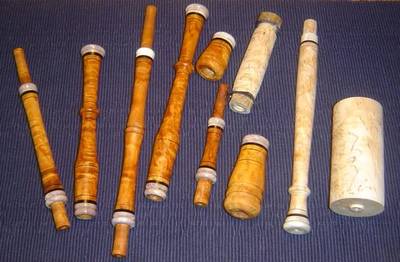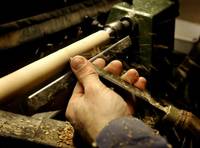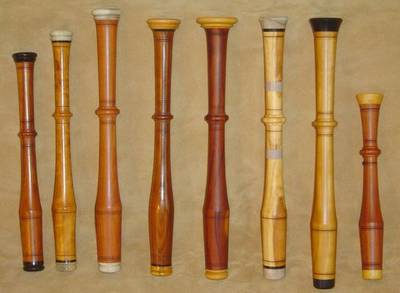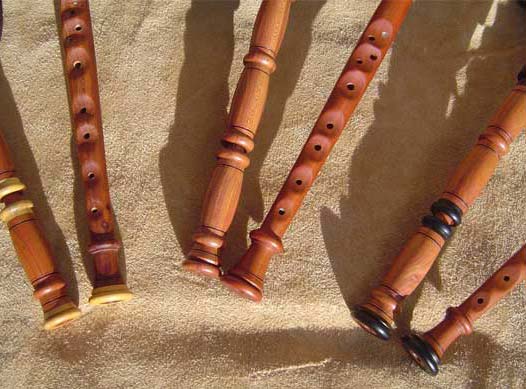About manufacture and design
I built my first instrument while still a teenager and was quickly fascinated by the material, wood. Even if it applies to acoustic music or the natural raw materials for my instruments, I have always loved the genuine, the natural and the down to earth.
There are no two similar pieces of wood, just as there are no two identical human beings. That is why I never build "in series" but build every instrument individually, adapted to the specific desires of the musician.




Traditional instruments are my prototypes that I continuously develop to make them as good and as reliable as possible. This is done without renouncing the natural raw materials, the specific sound of every instrument or of the traditional form. To build exact historical copies (which often are not quite right or do not work!) is not in my interest. Exceeding this I have developed new modern bagpipes, but even they are entirely based on traditional instrument-parts.
Design & appearance
The optical impression is not unessential for an instrument, for that reason I spend a lot of time on choice of material, form and design, and can also give vent for my artistic freedom. Apart from the almost endless possibilities of material- combination, I turn my bagpipes, at the present time, in two different styles, which I call "classic design" and "modern design".
The difficulty of choice
Some practical tips on what to do when choosing your own bagpipes:
Choose:
- Type of bagpipes
- Key of the chanter/melody flute.
- Drones, number, key and possible position
- Type of wood (plum, cherry, maple, olive tree, almond tree, curly-grained birch etc.)
- Rings (box, grenadilla, reindeer-horn, double rings or none at all…)
- Classic design or modern design.
- Bellow blown or mouth blown.
- Colour of the bag
Material
The wood I use is exquisite and well seasoned (at least 3 years, but some pieces have been lying for nearly 30years). I work mainly with plum, but even with other types of fruit-tree, such as cherry or apple as well as maple, almond-tree, olive-tree or curly-grained birch, the latter, above all, for the Swedish bagpipes.
The rings are made in box, grenadilla (black), reindeer-horn, seldom in buffalo-horn, occasionally even in whale tooth, but never in plastic.
The leather is ecologically tanned (no chemicals used in the tanning process) and comes from cattle. I usually have the following colours in stock: black, brown, beige, dark-blue, wine-red, dark-green.
The reeds are made of Mediterranean reed (lat.arundo donax) from Spain or France.
All the pipes are impregnated with a special deep penetrating cold-pressed linseed-oil. For further gloss one can have a shellac polish.
